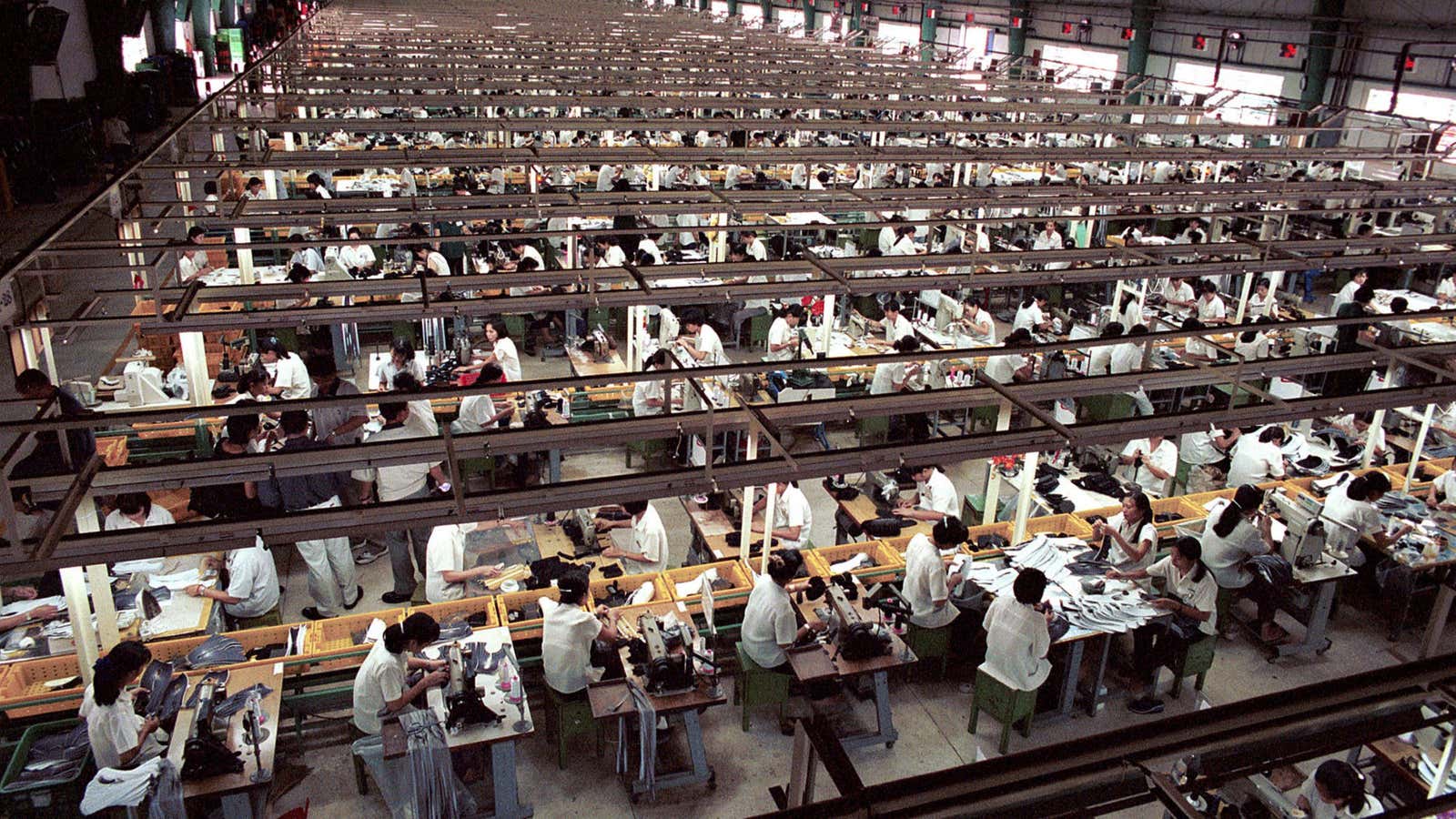Last January, NBC’s Brian Williams asked Apple CEO Tim Cook to imagine a situation where President Barack Obama mandated that the entire iPhone be produced in the US. In response to the question as to what a domestically-made iPhone would cost, Cook responded that manufacturing in the US is not a matter of price—it’s about skills, and that “over time, there are skills that are associated with manufacturing that have left the US.”
But it’s not just that segment of the tech industry that has left the country—it’s the tech we use to manufacture apparel as well. Now, around 98% of apparel purchased in the US is made abroad. If America intends to keep up, our approach to—and investment in—apparel manufacturing will have to evolve quickly.
Yester-tech in the 21st century
Despite common conceptions on why companies choose offshore production—specifically, price hunting—some actually leave to pursue more technically forward-thinking partners. Within a high-tech apparel supply chain, there are needs that US facilities just aren’t updated to meet. As a clothing maker, you would be hard pressed to find a partner with specialized technology such as ultrasonic welding machines or laser cutters, two technologies that, respectively, use high-frequency vibrations to create a solid weld and that cut fabric with incredible precision.
It’s telling that Ralph Lauren’s recent US-made line of clothes worn by athletes for the opening ceremony of the Sochi Olympics featured low-tech throwback-style sweaters.
What needs to be done
The American apparel manufacturing market has yet to evolve to keep up with growing international competition—but America has amazing strengths that we can leverage to develop into an apparel powerhouse.
First, the US market is strong when it comes to skilled labor. We can’t (and shouldn’t) compete on price with countries and regions that have an abundance of less expensive labor. Take, for example, seamless knitting, arguably of one of the greatest advances in apparel manufacturing over the last 20 years. An advanced manufacturing process that can best be likened to 3D printing for fashion, it allows clothing makers to execute on never-before possible designs for more comfortable and fluid garments. Nike uses seamless knitting to make its innovative Flyknit shoes, for example.
Seamless knitting requires one skilled manager per 5 to 10 machines, while traditional sewing methods require one operator per machine. Yet despite how well this method would suit the US market, a search for domestic factories with seamless capabilities will leave an aspiring apparel maker frustrated and underwhelmed. By investing in our talent through training and by leveraging new manufacturing technology, US operators could be much more effective, growing both the size and quality of the US market.
Second, America is no stranger to innovation, and we can bring that to apparel manufacturing. The US is home to such pioneering companies as Google, Apple, and Tesla, and we have created and maintained a global identity of starting tech trends. Without a makeover, however, the domestic apparel industry is at risk of falling behind.
Let’s update our manufacturing facilities to become the factories of the future. Some innovators are already doing this by creating advanced manufacturing hubs that extend to apparel, like Tony Hsieh’s Downtown Project and Stitch Factory. And rather than de-emphasizing imports, we could create an incentive system that encourages domestic manufacturers to invest in skills training and equipment.
America’s manufacturing future is bright—that is, if we make the right investments and seize the rising global demand for skilled, high-tech production.
